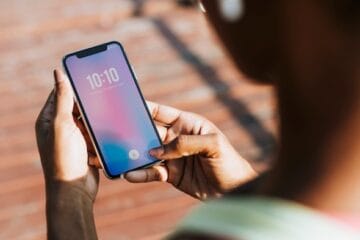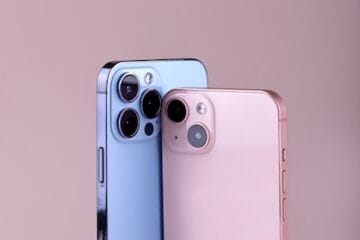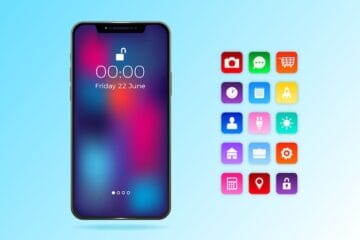
Apple and Samsung have long been reigning champions in smartphone camera technology, but there’s a new challenger vying for the top spot — Google’s new Pixel smartphones.
Apart from getting the highest score for a smartphone on DxOMark, the camera rating website, tech reviewers (including us) have been pouring in rave reviews for the Pixel’s camera.
We wanted to take a closer look, and what better time to do a shootout than my vacation in France? I had a Pixel in one pocket and an iPhone 7 Plus in the other. I wanted to approach the shootout as a layperson, without any phone tripods or manual camera apps — only stock software, what an average consumer would use.
Related: Google Pixel review
I ended up using the Pixel as my main camera throughout my nine days in France, which is a first for me as I usually stick with my DSLR. It was one of the first times that I had a trouble-free experience with an Android smartphone camera, and I was able to quickly grab shots thanks to Google’s ingenious shortcut to launch the camera app — double-tapping the power button. You can then use the volume buttons as the shutter button.
The cameras on most Android smartphones have been unreliable in my experience. We’re not denying that cameras from phones like the Nexus 6P and 5X, for example, haven’t offered stellar shots. But there has always been something that made the experience frustrating, whether it’s a delay when launching the camera, long-processing times, or shutter lag. Google’s Pixel fixes all of these problems and more.

There’s almost zero lag using the Pixel camera. I initially said in my review that the camera took half-a-second to capture photos with HDR+, which was annoying at times, but a software update has made it instantaneous. It still takes about two to three seconds to process these HDR+ photos. HDR+ captures several shots with the short exposure times. The best shot is then used as a base, and the others are then layered over to offer a photograph with less noise and blur — perfect for low-light scenarios. It also helps with high-dynamic range environments by taking multiple photos with the same exposure, so that bright parts of a photo aren’t blown out.
Related: We put the new Google Pixel XL smartphone through its paces – so how did it do?
Both the Pixel and Pixel XL have the same camera on the rear, with 12.3 megapixels and a large pixel size (1.55 micron pixels) which helps for low-light photography. Apple’s iPhone 7 Plus also has a rear camera with 12.3 megapixels, but it also has a second lens that lets you optically zoom for a closer shot. The second telephoto lens is also used for Portrait mode, which adds a DSLR-like blur around a subject.
A close match
So what have I learned in my time using the two flagship phones? The iPhone 7 Plus and Pixel have excellent cameras, and declaring a winner isn’t cut and dry. There are times the Pixel offers superior photos, but there are plenty of moments where the iPhone comes out on top. Photos from the Pixel often have bluer hues, whereas iPhone images are warmer. The latter also has more realistic photos, but that doesn’t mean the shots are better. A lot of times I prefer the more saturated images on the Pixel, especially in daylight conditions, but your personal preference may vary.
- Pixel
- iPhone 7 Plus
Here’s a good example showcasing the bluer hues on the Pixel and the warmer colors on the iPhone. Overall, I prefer the Pixel photo for two reasons — there’s more detail when you zoom in, but more importantly the colors pop out and there’s a little more contrast. That makes the picture look more interesting, and I find the iPhone photo to be a little bland and flat, even if it is brighter.
Below is a closer look at the same photo. You can see a lot more detail as you look further into the distance, but even in the foreground, the trees on the iPhone 7 Plus look like an oil painting, whereas it’s easier to make out more structures on the Pixel.
- Pixel
- iPhone 7 Plus
Here are a few more comparisons between the Pixel and the iPhone 7 Plus. You can click on images to enlarge them. iPhone 7 Plus photos were transferred manually from the device to a PC, and the Pixel photos were downloaded from Google Photos — they are the full resolution images, thanks to the free storage option from Google for Pixel owners. The photos are likely compressed when uploaded to WordPress, though. All the photos were taken in Auto-HDR mode — it’s the default setting for both cameras.
- Pixel
- iPhone 7 Plus
- Pixel
- iPhone 7 Plus
- Pixel
- iPhone 7 Plus
- Pixel
- iPhone 7 Plus
- Pixel
- iPhone 7 Plus
- Pixel
- iPhone 7 Plus
- Pixel
- iPhone 7 Plus
- Pixel
- iPhone 7 Plus
Overall, the Pixel photos are a little sharper and are often more saturated. The iPhone’s photos tend to be a little more realistic, but they sometimes look flat and less dynamic. In low-light scenarios, you do need to make sure you hold your Pixel steady, as it doesn’t have optical-image stabilization. The iPhone has the leg up here, as we sometimes had to take an extra photo with the Pixel to make sure it wasn’t blurry.
You may end up liking the iPhone 7 Plus photos over the Pixel, which is valid, because the answer to which photo is better is purely subjective. Both phones take excellent photos and they won’t disappoint in real-world performance with shutter lag or any other issues.
Oversaturation
The over-saturation on the Pixel can be problematic at times. Take a look at the images below:
- Pixel
- iPhone 7 Plus
Here’s one scenario where the Pixel went overboard. The iPhone photo retains more detail and is pleasing to the eye — like a still from a movie. The Pixel’s photo has too many colors blown up, which is distracting. There were a handful of moments, particularly in low-light environments, where I would have preferred the Pixel to crank the saturation down. Hopefully, Google can fix the phone’s tendency to oversaturate in low-light via a software update.
Lens Blur
Unfortunately, I don’t have many photos taken with the iPhone 7 Plus’ Portrait mode to compare it with Google’s Lens Blur. Still, from my experience using both over the past few weeks, I believe Apple’s implementation is consistently accurate and tends to look better than Google’s.
Related: Does the Google Pixel really have the best smartphone camera? Judge for yourself
Lens Blur still is a great way to place emphasis on a subject, like portraits. Once you select the mode, after you capture a photo the app will prompt you to raise your camera up. The photo will then take a few seconds to process, but you’ll then end up with something like this:
The effect on this photo is pretty good, but you can see there’s not enough blur on the left side where the older woman is behind the primary subject. Here’s the same scenario without Lens Blur:
I do prefer the Lens Blur variant of this photo, but there’s room for improvement in that shot. Here are a few more comparisons:
- Pixel
- Pixel with Lens Blur
- Pixel
- Pixel with Lens Blur
The Lens Blur on the photo with the hourglass set is great, but the first photo doesn’t blur out a part of the woman in the yellow jacket. It’s this type of inconsistency that makes the iPhone 7 Plus’ Portrait mode superior. More often than not, though, as long as you have a clear subject and a fairly clutterless background, the effect should work perfectly. You can also use the refocus tool to fix the photo, but I never end up making much use of this — it’s usually better to retake the shot if possible.
With Lens Blur, moving the phone up isn’t always reliable or comfortable. It often made errors, saying I moved too fast or that there was just an “error.” It also often doesn’t work in low-light scenarios most of the time — and all of that makes it unreliable. The iPhone’s Portrait mode does have its kinks — like how you need to make sure you’re a specific distance from the subject — but it’s much faster and consistent.
It’s also better because it uses a blend of hardware and software to get the job done. The standard camera takes a photo, and then the second wide-angle sensor measures multiple layers to sense the depth-of-field and see how far the subject is. It’s why you can see the blur effect before you even snap a picture. You end up with a fairly sharp subject and a blurry background.
Portrait mode only works on the iPhone 7 Plus, but Lens Blur can work on any device that can install the Google Camera app, notably Pixel and Nexus smartphones.
Zoom
Apple’s iPhone 7 Plus has one feature that the Pixel doesn’t have: 2x optical hardware zoom. The iPhone also has digital zoom up to 10x, but the picture quality will decrease after you leave the 2x hardware zoom behind.
This is a nice photo. Perhaps a little overexposed on the mountains, but it’s pretty good overall. This was taken with the iPhone 7 Plus. Now let’s zoom in with the second lens on Apple’s smartphone.
This is an even better photo, and it’s thanks to the iPhone’s second “telephoto” lens. The mountains aren’t as sharp when you zoom in, but it’s still a phenomenal job for a phone camera. The Pixel doesn’t offer anything similar. It features digital zoom, like most smartphone cameras, and it’s something you don’t really want to use as your merely cropping the picture.
You’ll still be able to frame some decent photos with the Pixel camera’s zoom, but it’s not going to look as good as the iPhone’s optical zoom. Here’s an example.
Details aren’t sharp at all, and the grain in the photo is easily noticeable. There’s just no competing with the iPhone 7 Plus’ second camera until Google adds some form of optical zoom into next year’s Pixel smartphone.
Winner: Google Pixel
The real highlight here is the ease of use and the reliability of the Pixel camera. The speed at which I can open it and take a photo is impressive and goes a long way in quickly getting the shot I want. The lack of shutter lag makes me worry less about keeping my hands steady, at least when there’s plenty of light. It’s the same with the iPhone 7 Plus. Both cameras are dead easy to use and take great shots without much effort on your part.
Related: The best smartphone camera you can buy
The quality of the photos we took with the Pixel are on par — if not better — when compared to the iPhone 7 Plus. Some of the differences between photos taken by both phones are things people will disagree on, but the big takeaway is this: There’s finally an exceptional and reliable camera on a phone that runs stock Android. That’s what’s best about the Pixel.
I believe the Pixel’s camera takes more appealing photographs in most cases, but personal tastes will vary. The iPhone 7 Plus has the edge with special features like 2x zoom and a slicker bokeh effect, but the Pixel took better photos on the fly in our tests. The Pixel is the winner for everyday photography.
[Source:-Digital Trends]

































